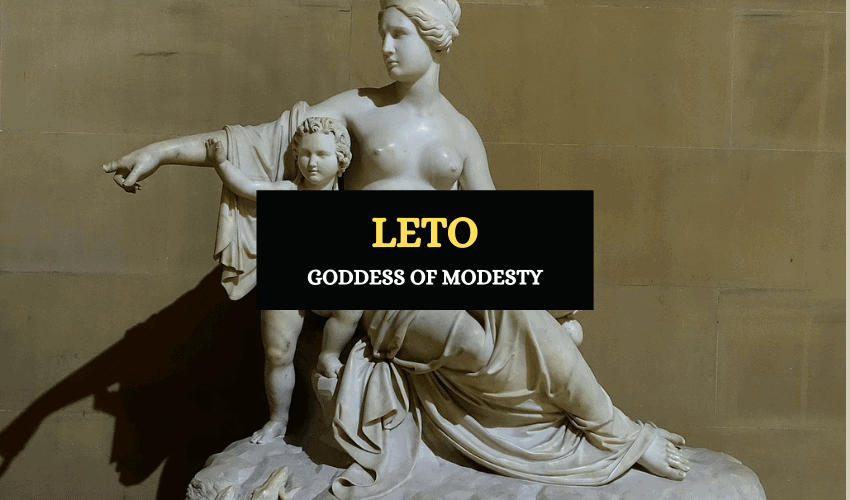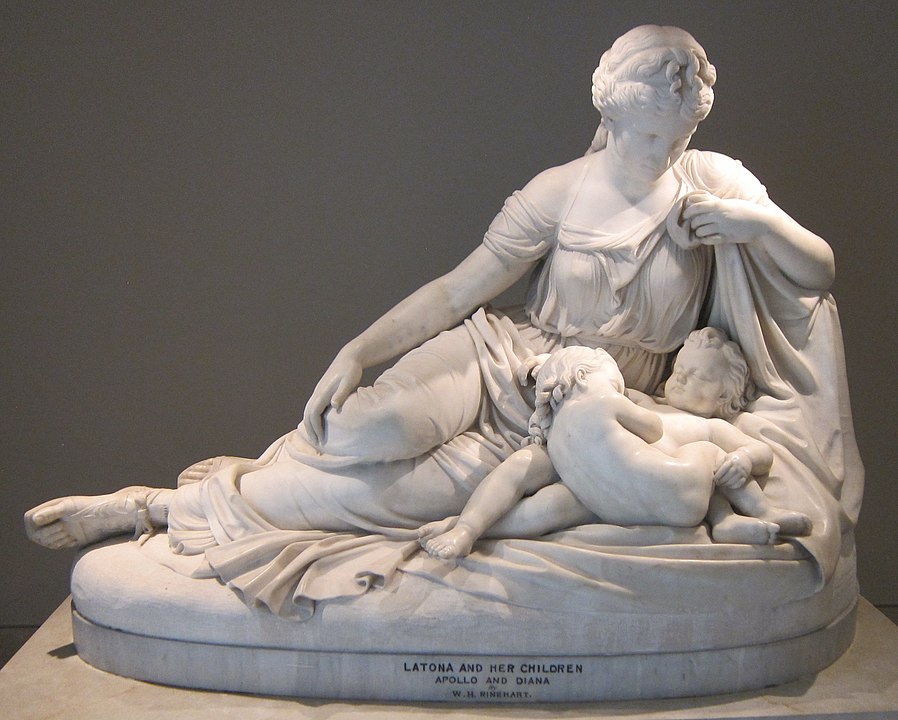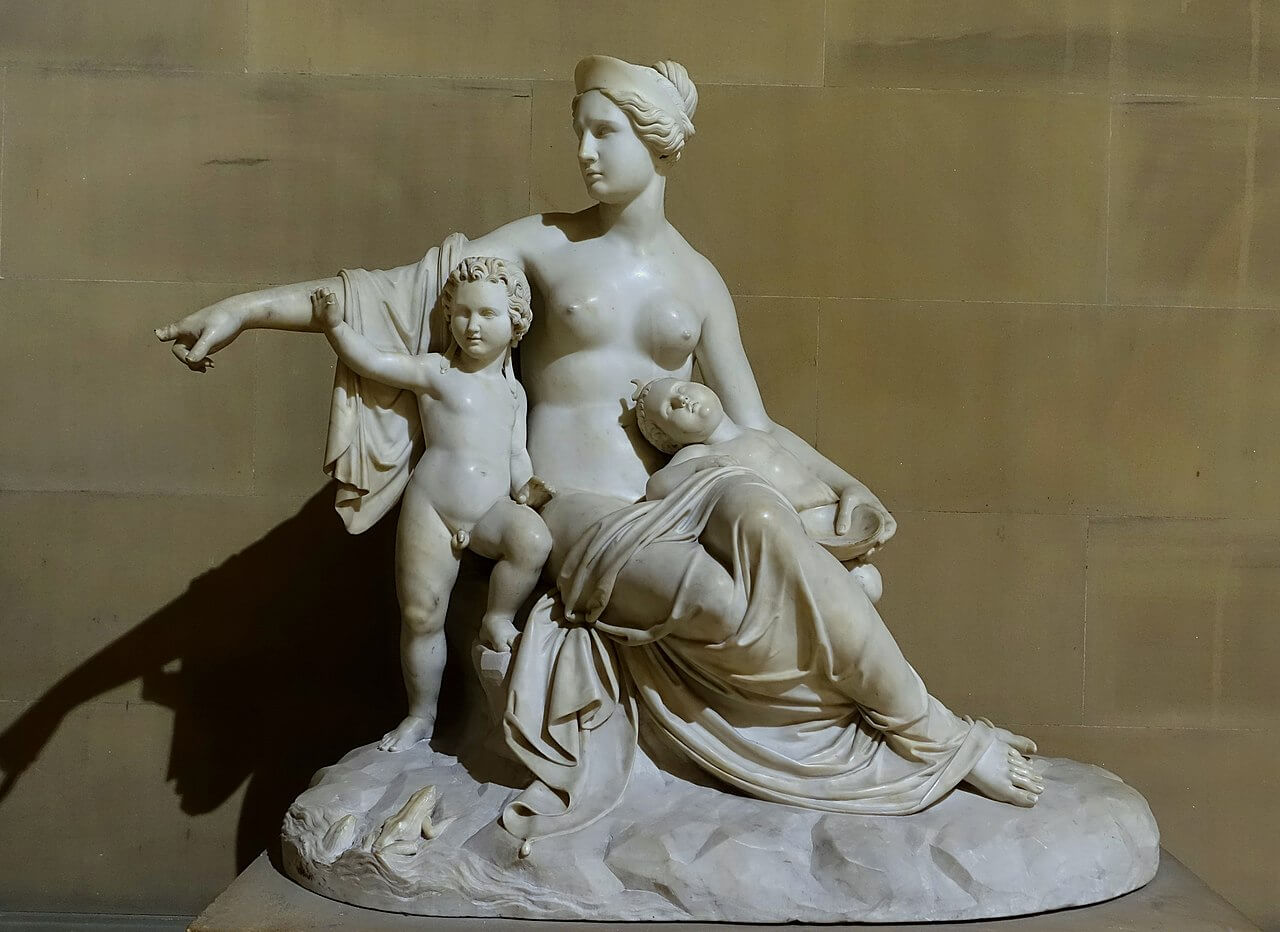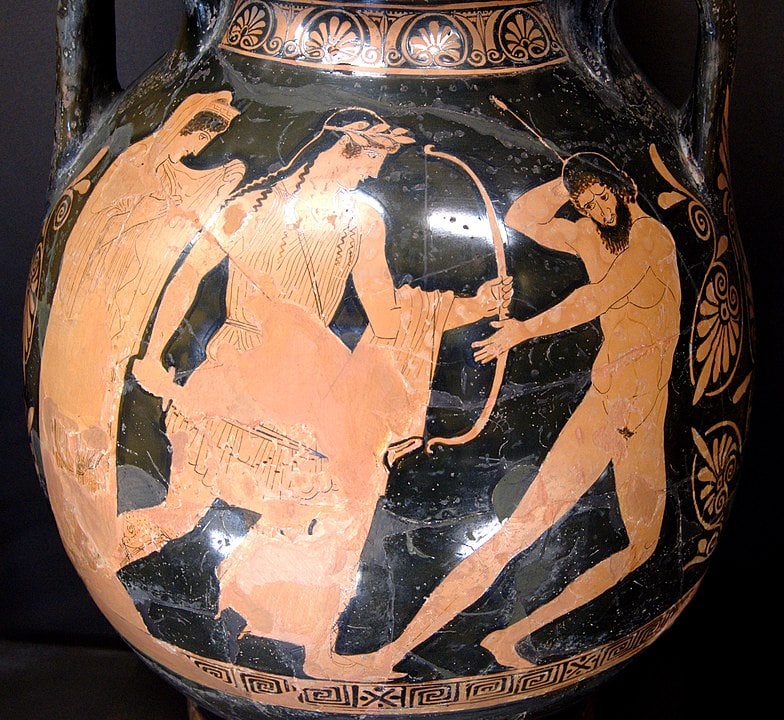
Table of Contents
Leto was one of the most wronged characters in Greek mythology and was respected as a powerful deity. She was the goddess of motherhood and modesty and was known as the mother of Apollo and Artemis, two powerful and important deities of the Greek pantheon. Leto featured in several myths including the tale of the Trojan War. Let’s take a look at her story.
Who Was Leto?
Leto was a second generation Titaness and daughter of the first generation Titans Phoebe and Coeus. Her siblings included Hecate, the goddess of witchcraft, and Asteria the goddess of the falling stars. Leto had two children by the Olympian god Zeus: Apollo, the Greek god of archery and the sun, and Artemis, the goddess of hunting.

Various sources have different explanations for the meaning of Leto’s name, some stating that it’s related to ‘Lethe’, one of the five rivers of the Underworld. Others say that it was related to the ‘lotus’ which was a fruit that brought oblivion to anyone who ate it, as outlined in the tale of the Lotus Eaters, and that her name would therefore mean ‘the hidden one’.
Leto is often depicted as a beautiful young woman wearing a veil and lifting it in modesty, with her two children beside her. As the goddess of modesty, she was said to have been very self conscious and always hid behind a black robe that she had worn since the day she was born. According to Hesiod, she was the kindest of all the Titan deities who loved and cared for everyone around her. She was said to be the ‘gentlest in all of Olympus’. However, when angered, she could be merciless and wrathful, as can be seen in the myths of Niobe and the Lycian peasants.
Zeus Seduces Leto
When the Titanomachy, the epic ten-year war fought between the Olympians and the Titans, ended with Zeus overthrowing his own father Cronus, all Titans who refused to side with Zeus were punished. They were sent to Tartarus, the deep abyss that was used as a dungeon and prison of suffering and torment. However, Leto hadn’t taken sides during the Titanomachy so she was allowed to be free.
According to the myth, Zeus found Leto to be extremely attractive and he was besotted by her. Although he was married to his sister Hera, the goddess of marriage, Zeus decided that he had to have Leto and, acting upon his impulses, he seduced the goddess and slept with her. As a result, Leto became pregnant by Zeus.
Hera’s Revenge
Zeus had a reputation for not being faithful to his wife and had many extramarital affairs which she wasn’t blind to. She was always angry and jealous of Zeus’ many lovers and their children and she tried her best to take revenge on them.
When Hera found out that Leto was pregnant by Zeus, she at once began to harass Leto and prevent her from giving birth. According to some sources, she cursed Leto so that she wouldn’t be able to give birth on any land on Earth. She told the water and land not to help Leto and she even covered the Earth in a cloud so that Eileithyia, the goddess of childbirth, wouldn’t be able to see that Leto needed her services.
Hera continued to harrass Leto and had the horrific dragon, Python, chase after the goddess without allowing her to rest in her time of difficulty.
Leto and the Island of Delos
Python continued to chase Leto until Zeus helped the goddess by sending down Boreas, the North Wind, to blow her out to sea. Eventually she arrived at the floating island of Delos and she begged the island to give her sanctuary.
Delos was a rocky, desolate and barren island. Leto promised the island that she would turn it into a beautiful island if it helped her. Since Delos was a floating island, it was considered as neither land nor water so by helping Leto, it wasn’t going against Hera’s orders. However, when Leto touched Delos, it became strongly rooted to the floor ocean and stopped floating. In moments, the island was transformed into a paradise, teeming with life and covered in lush green forests.
According to ancient sources, the island of Delos was said to have been the goddess Asteria, Leto’s sister. Asteria had been transformed into the floating island in order to escape from the advances of Zeus and it’s said that this was why she agreed to give her sister sanctuary.
Apollo and Artemis Are Born

Now that Leto had a safe place to stay, she was able to give birth to her children (twins, as it turned out) in peace. Artemis was born first. Leto struggled for nine days and nine nights, but there was no sign of the baby.
Eventually, the goddess of childbirth, Eileithyia, found out that Leto was suffering in labor and she came to her aid. Soon with Eileithyia’s help, Leto delivered her second child, Apollo.
In alternate versions of the story, Eileithyia had been kidnapped by Hera so that she could not help Leto and it was it was actually Artemis who assisted her mother as she gave birth to Apollo.
Tityos and Leto
Apollo and Artemis became highly skilled in archery at a very young age so that they could protect their mother. When Apollo was just three days old, he killed the monster Python that had been harassing his mother, using a bow and arrows made by Hephaestus.
Later, Leto was once again being harrassed by Tityos, the giant. Son of Zeus and the mortal princess Elara, Tityos tried to abduct Leto while she travelled to Delphi. However, Apollo and Artemis heard the sound of their mother struggling to fight the giant and they rushed to her aid. Tityos was sent to Tartarus, where he was punished for eternity.

Leto and Queen Niobe
Leto played a part in the myth of Niobe, the daughter of the wicked king Tantalus. She was the Theban queen and had fourteen children (seven daughters and seven sons) of whom she was very proud. She often boasted about her children and laughed at Leto for having only two, saying she was a much better mother than Leto was.
Leto was outraged when she heard Niobe’s boasting. She asked Apollo and Artemis to kill Niobe’s children. The twins agreed and Apollo killed all seven sons and Artemis slew all seven daughters.
Overcome with grief, Niobe’s husband Amphion committed suicide and Niobe herself was said to have turned to marble. However, she continues to weep for her children and her body was placed on a high mountain peak in Thebes. This story showcases Leto’s vengefulness.
The Lycian Peasants
According to Ovid in the Metamorphoses, the region of Lycia was Leto’s home, where she arrived shortly after Apollo and Artemis was born. The goddess wanted to bathe in a spring to cleanse herself (although some say that she wished to drink some water from a pond) but before she could do so, several Lycian peasants came and began stirring the water with sticks so that it became muddy, driving the goddess away. The peasants had many cattle that were thirsty and they had brought them to the spring so they could have their drink of water.
Leto, with the guidance of wolves, cleansed herself in the River Xanthus instead and once she was done, she returned to the spring where the peasants were. She turned all the peasants into frogs so that they would have to stay in the water forever.
Leto in the Trojan War
Leto was allied with the Trojans during the ten-year long Trojan War along with her children Apollo and Artemis. The goddess was closely associated with Lycia which was allied with the city of Troy during this time. Some sources say that Leto was about to fight against Hermes, the messenger god, who supported the Achaeans, but Hermes decided to stand down out of respect for the goddess.
When Aeneas, the Trojan hero was injured, it was Leto who healed his wounds with the help of Artemis and they restored him to his former magnificence and power.
Leto also featured in a number of minor myths. In one of these, Apollo was about to be sent to Tartarus by Zeus for killing a Cyclops but Leto begged Zeus to reduce Apollo’s punishment, which he did.
Worship of Leto
Leto was worshipped extensively in Greece, with several temples dedicated to her name. Her cult was concentrated mostly in the southern shore of Anatolia. According to the ancient sources, her worship was most intense in Lycia, the home of the goddess. Here, she was worshipped as a domestic and national goddess as well as the guardian of tombs. She was dearly loved by the people because of her kindness and they also worshipped her as a guardian of mothers, children and families.
It’s said that there is a large temple called ‘the Letoon’ (it was also called the Temple of Leto’ in Lycia where she was worshipped alongside Apollo and Artemis. Herodotus states that in Egypt Leto was worshipped in the form of the cobra-headed goddess known as Wadjet.
In Brief
Although Leto was a very famous and loved deity in ancient Greece, her name is now obscure and very few people know about her. She is now mostly known from the story of the birth of her children, the twin gods.








